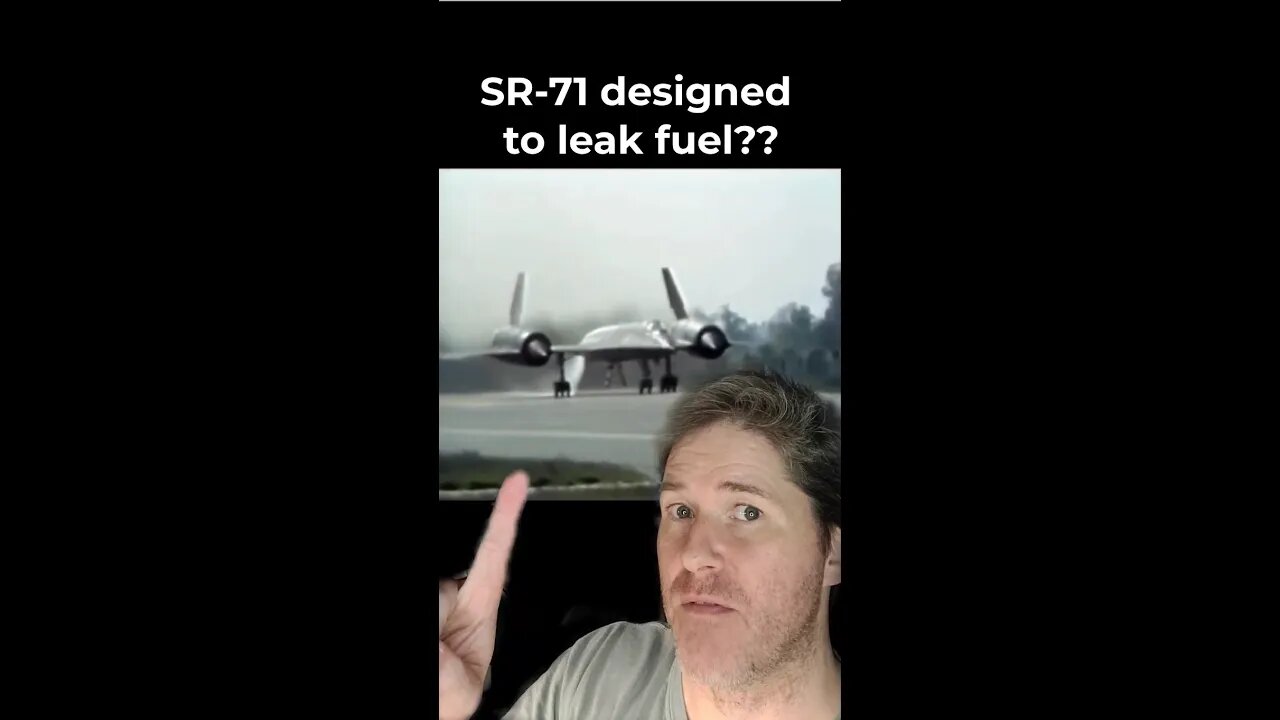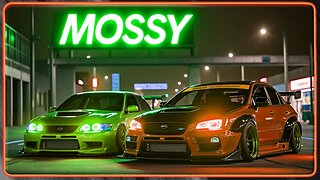Premium Only Content

Myth: SR-71 Designed to Leak Fuel
👍SUBSCRIBE👍 to see more tech videos! → https://www.youtube.com/channel/UCS7Q_pcIDNHefwBwuH7FhrQ?sub_confirmation=1
🔷FOLLOW MY SOCIALS🔷
Twitter - https://twitter.com/Warning_56k
Facebook - https://www.facebook.com/Warning56k
TikTok - https://www.tiktok.com/@warning56k
You may have heard the myth that the SR-71 was "designed to leak fuel". Lets break that down.
The SR-71 was no more "designed to leak fuel" than an average car tire is 'designed to leak air'.
The SR-71 was designed to continually operate at speeds over Mach 3, and where there's speed, there's friction, and friction means heat. The SR-71s hull was primarily composed of titanium which is very resistant to heat, but still expands when heated to the 400 degrees Fahrenheit it experienced when at Mach 3 speeds. Likewise, the skin would contract when the SR dropped below Mach speed. The engineers of the SR-71 designed the aircraft to be able to withstand this repetitive expansion and contraction of the skin, but it led to an issue... how the SR-71 held its fuel.
The SR-71 did not have typical metal fuel tanks. Instead, it featured an innovative flexible, bladder-like fuel tank system called a 'total wet wing fuel tank system', where the fuel was directly contained by the aircraft skin its self. The gaps in the skin panels were filled with a special type of sealant made to not only hold back the fuel, but to also hold up to the repetitive expansion and contraction experienced. The problem with this repetitive expansion and contraction of the skin combined with the extreme temperatures variances experienced eventually caused the sealant to deteriorate and break down, causing leaks.
Fuel sealants were applied and re-applied during maintenance intervals and when equipped with fresh seals, the SR-71s did not leak or leaked very little. The cost and time required to completely reseal an SR-71 with it's high demand for mission readiness, meant that unfortunately some leaks had to be accepted. It wasn't a 'problem' per say, but was still an issue.
It was an issue such that the rate of leakage and when to replace the seals was considered and built into a maximum allowable leakage chart that listed the limits of leak rates in certain areas and when seal replacement was required.
So, the SR-71 did leak fuel at times, but not 'by design' and nor was it a desired outcome.
This leads to the other common myth that goes "The SR-71 leaked so much fuel that they had to fill it completely up and had to immediately refuel after takeoff".
This is not true. While the amount or rate of fuel leakage varied depending on where one specific SR-71 lied on its maintenance interval timeline, on average they leaked relatively little compared to its capacity. SR-71s were not completely filled up before take-off. In fact they were actually only partially filled with fuel at takeoff for safety reasons, such as if an engine failed it would be much easier to land, as well as much easier on the brakes and tires. This is also the same reason why commercial aircraft may dump fuel before unexpectedly having to land if diverted due to weather conditions, technical problems, or emergency landings immediately after takeoff.
The SR-71s unique design that allowed it to achieve its incredible speed and altitude was a detriment at low speeds and low altitude. Due to its sub optimal low-speed design, it had to use its afterburners at takeoff and during its climb to altitude, greatly increasing its already 'high' rate of fuel consumption with the partial fuel that it had at take off.
There's also another reason the SR-71 had to refuel after takeoff, that's not talked about often.
During Mach 3 cruise, the JP-7 fuel in its six fuel tanks heated to over 300 degrees F., with the aircraft's titanium skin reaching nearly 400 degrees F., heightening the volatility of the fuel. This led to a limitation: a maximum speed of Mach 2.6 unless an inert atmosphere was maintained inside the fuel tanks. This required the SR-71 to be equipped with nitrogen tanks that held 260 liters of liquid nitrogen so that as the SR-71 consumed fuel, the growing empty space in the fuel bladders was gradually replaced with nitrogen gas. This meant that after takeoff and achieving altitude, the SR-71 had to refuel with JP-7 so it could then pressurize its fuel tanks with nitrogen gas and go faster than Mach 2.6.
So, the SR-71 had to immediately refuel after takeoff because #1, it was only partially filled with fuel at takeoff. #2 its inefficient design at low speed and low altitude made it continually use its afterburners during and after takeoff to achieve altitude. And #3 it could not go faster than Mach 2.6 without full tanks or partial tanks pressurized with nitrogen gas.
The next time you hear someone say "The SR-71 was designed to leak fuel" or "It leaked so much fuel on the runway it had to immediately refuel", let them know the facts.
-
 LIVE
LIVE
Lofi Girl
2 years agolofi hip hop radio 📚 - beats to relax/study to
387 watching -
 2:23:21
2:23:21
PandaSub2000
5 days agoMadison VR (Part 4) | PSVR 2000 (Original Live Version)
14.4K2 -
 2:34:32
2:34:32
Badlands Media
5 days agoCODEX 9/11
284K249 -
 1:53:43
1:53:43
Nerdrotic
8 hours ago $0.30 earnedMysteries of 3I/ATLAS | Forbidden Frontier #113
47K5 -
 2:04:21
2:04:21
vivafrei
1 day agoEp. 278: D.C. Peace Wave! Big Tish & Nipple Judge SPANKED! "Maryland Man" Trafficker FREE & MORE?
101K127 -
 3:02:42
3:02:42
Damysus Gaming
4 hours agoBorderlands 3 - Part 8 - FL4K Time | Children of the Vault be Warned!
17.5K -
 1:30:28
1:30:28
Patriots With Grit
7 hours agoWhat You Should Know About Harmful Vaccine Ingredients And What To Say To Your Doctor, Pediatrician, Health Department or School When They Pressure You, Your Kids Or Your Family Members | Dr. Bryan Ardis, D.C.
15.5K8 -
 2:21:12
2:21:12
This is the Ray Gaming
3 hours ago $0.03 earnedSunday Night Live with the Boys | Rumble Premium Creator
8.64K -
 2:02:16
2:02:16
ItsMossy
4 hours ago🍃NEW MIC WHO THIS🍃DRIVING SIM GO BRRR🍃420 SESH🍃
5.43K1 -
 3:00:58
3:00:58
THOUGHTCAST With Jeff D.
4 hours agoSunday night Fortnite With ScottishVikingGaming & crew
3.91K1